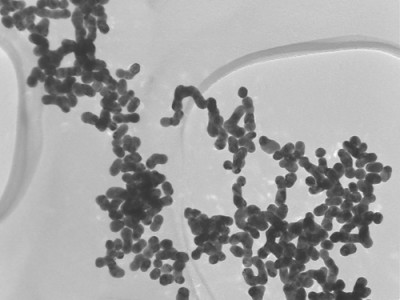Metals
Samples for metal examinations at Microtrace originate from a variety of sources ranging from requests to identify unknown materials that turn out to consist of metal or metal particles, to the characterization of metal alloys, catalysts and other metal nanoparticles, to analyses that support metal failure investigations. The microscopic and nanoscopic features of these items are examined using a combination of reflected light microscopy as well as scanning and transmission electron microscopy. Critical evaluations of the morphology, heterogeneity, and composition provide insights into the history of the samples, corrosion processes, and the methods of particle formation. Energy dispersive x-ray spectroscopy in the SEM and micro-x-ray fluorescence are used in conjunction with each other to determine the bulk and trace elemental compositions of metal samples.
Identification – Ordinary and Exotic Metals
Over the years we have come across nearly every type of metal from bronze in ancient statuary to exotic alloys used in specialized modern applications. Complaint samples have contained everything from an overabundance of aluminum filings to dental fillings and stainless steel parts.
When necessary, these metals can be quantitatively analyzed to determine both bulk composition by SEM-EDS and trace elemental composition using micro-XRF.
Comparison
In many industrial investigations, it is necessary to identify the source of a complaint metal. When potential source materials are available, it is possible to directly compare both the elemental composition and the morphology of the known and the foreign metals. In some instances, distinctive features such as unusual inclusions or a rare alloy can provide a specific and unique answer to the origin of a material.
Nanoparticles
As applications for nanoparticles become increasingly prevalent, we encounter more and more projects in which they are found. In addition to these engineered metal nanoparticles, we have also encountered them in a variety of other sources such as in dust samples. To read more about our work on nanomaterials, follow this link.
Corrosion studies
Metal corrosion is encountered on virtually all metal from ancient Grecian art to modern manufactured parts. Identifying the phase or composition of the corrosion, characterizing its thickness, determining its source, and even studying its micro- or nano-structure to examine the impact of leaching or trace elements has been performed by Microtrace scientists. Utilizing samples prepared by a cross section ion beam polisher, these often fragile structures can be studied directly in relation to the substrate with minimal disturbance in order to characterize the mechanism of corrosion.
Failure Analysis
Our observations and analyses often facilitate the identification of the root causes of metal failure. When applicable, we have metallurgists who assist us with the interpretation of data we generate.
Related standardized methods: ASTM E11, E2016, E2814, E2864
How May We Help You?
Contact usto discuss your project in more detail.








